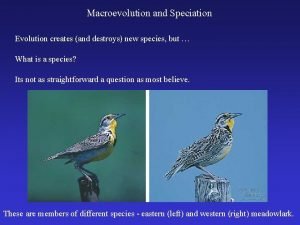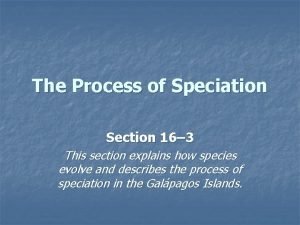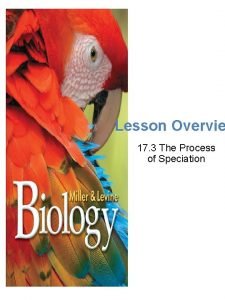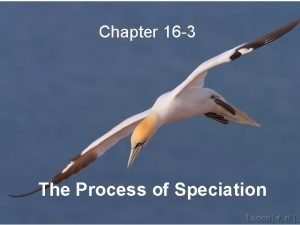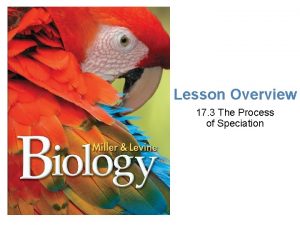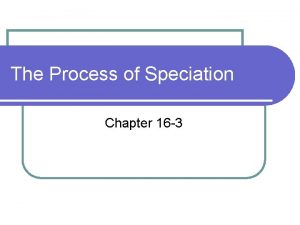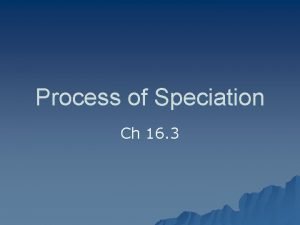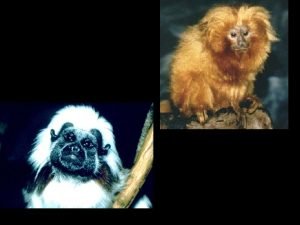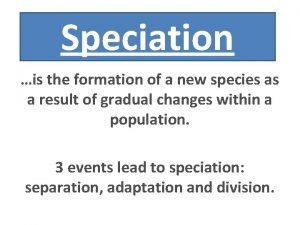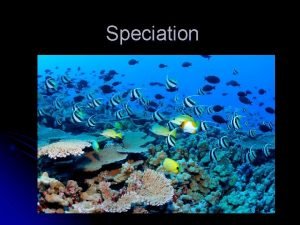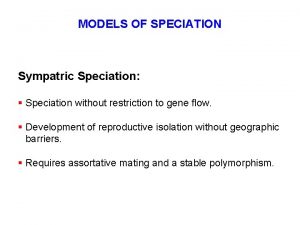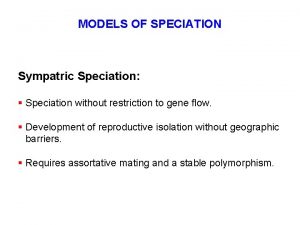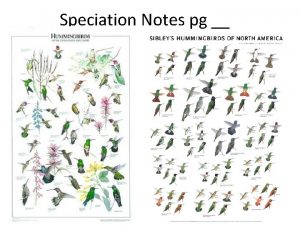Chapter 16 3 The Process of Speciation Introduction










- Slides: 10

Chapter 16 -3 The Process of Speciation

Introduction • Speciation is the formation of new species • Different species can not interbreed to produce fertile offspring. – Individuals in different species have a different gene pool.

Reproductive isolation : • When members of the two different species do not interbreed and produce fertile offspring. • Populations must be reproductively isolated from each other for a new species to evolve.

Three ways that reproductive isolation occurs. 1. Behavioral isolation 2. Temporal isolation 3. Geographic isolation

Behavioral isolation • occurs when populations are capable of interbreeding BUT have differences in courtship rituals or other types of behavior.

Example: Eastern and Western meadowlarks -Their regions overlap -They can interbreed but do not -Different courtship rituals (attracted by different songs)

Geographic isolation - can occur when populations are separated by geographic barriers such as rivers, mountains, or bodies of water. Abert Example: -The Kaibab squirrel evolved from the Abert squirrel when it was isolated from the main population by Kaibab the Colorado River.

Temporal Isolation • Occurs when two or more species reproduce at different times. Example: three similar species of orchid in the same rain forest releases pollen on different days.

Testing Natural Selection in Nature How could differences in beak size lead to reproductive isolation? • Birds with the same beak size prefer to mate with each other. • Since, big-beaked and smaller-beaked birds would not choose to mate with each other, their gene pools would remain isolated.

Studying Evolution Since Darwin • Why is the study of evolution important in the scientific world? • By understanding evolutionary theory, we have been able to respond to changes in the living world in ways that have improved human life.
 Antelope squirrel allopatric speciation
Antelope squirrel allopatric speciation Modes of speciation ppt
Modes of speciation ppt Speciation process
Speciation process Section 16–3 the process of speciation
Section 16–3 the process of speciation Speciation process
Speciation process Speciation process
Speciation process Section 16-3 the process of speciation answer key
Section 16-3 the process of speciation answer key Section 16–3 the process of speciation (pages 404–410)
Section 16–3 the process of speciation (pages 404–410) Biological species concept
Biological species concept Taxonomic species concept
Taxonomic species concept Speciation or the formation of new species is
Speciation or the formation of new species is
